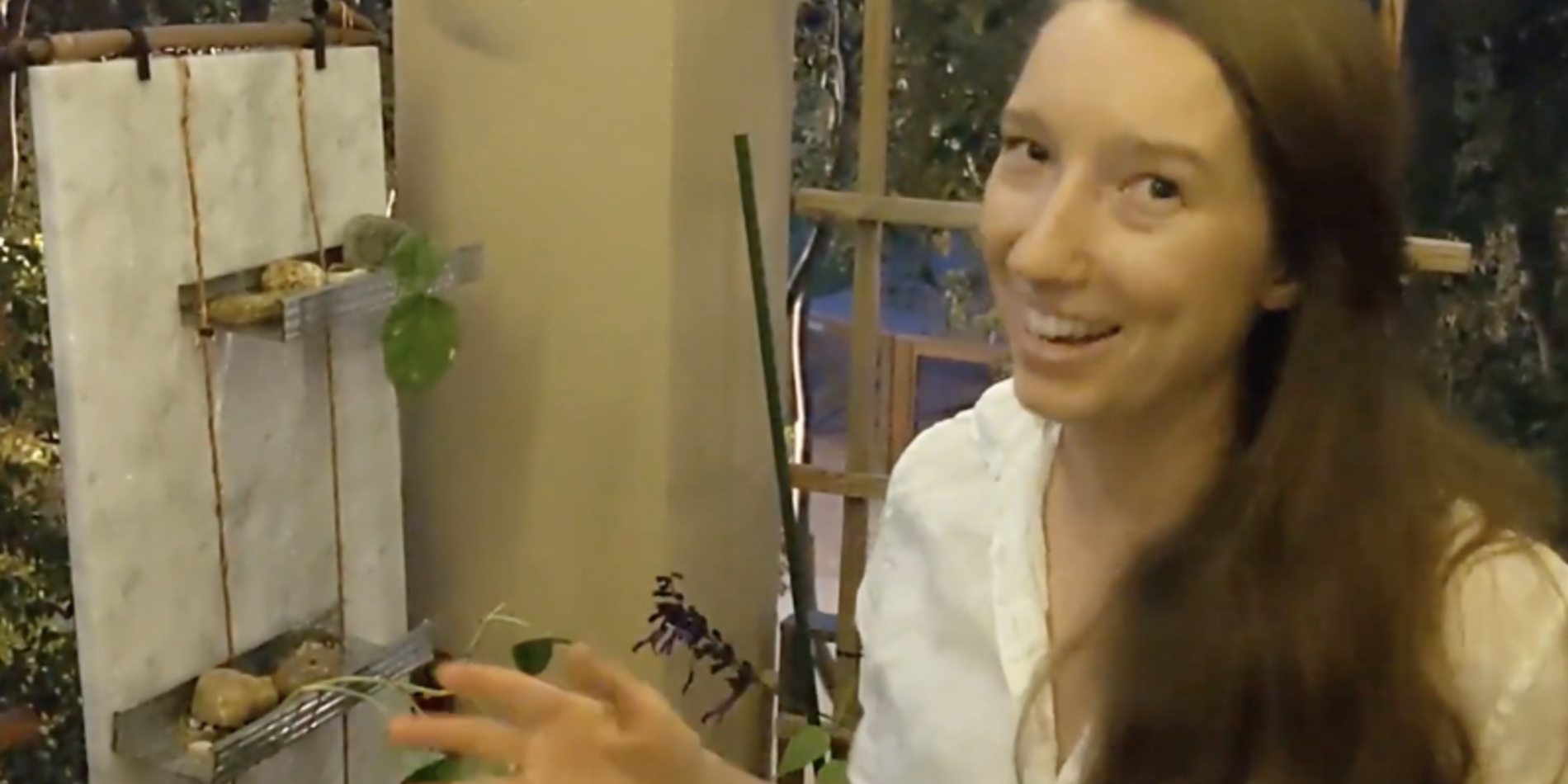Tips for Teachers: Remote hands
Hands-on learning, at a distance
You were planning a great hands-on lesson for your students before COVID-19 hit. What do you do now?
With millions of students learning from home, it's worth revisiting some of the options for hands-on learning, at a distance. At the GSE Makery, we’re exploring four approaches remote hands-on learning. Each way has its own benefits and challenges when it comes to support, supplies, and equipment for making.
Use materials already at home.

The tools and materials that many people have around the house can often be repurposed for hands-on learning. GSE student Mathieu Penot (LDT '20) is using this approach to keep kids engaged in hands-on projects using sticks and rubber bands, cardboard and scissors, paper and tape. You can look online for examples of people making circuits using aluminum foil, creating clothing out of duct tape, and “upcycling” trash in creative ways.
One challenge to this approach is that not everyone has the same supplies and tools. Depending on your goals for the lesson, this may or may not be a dealbreaker. You might use this as an opportunity to explore how constrained resources generate new, creative solutions.
Send a kit.
There is a long tradition of kits for hands-on learning. My father gave me a balsa wood airplane kit when I was nine. Maybe you had a chemistry set or a kit to make a no-sew pillow. If your lesson fits an existing kit that can delivered to students, great! But what if you want a specific set of tools and materials? Our colleagues teaching EDUC 261D: Computational Thinking Elective at the GSE created a custom shopping list on amazon.com. We collaborated with them to build a list including batteries and LEDs, foil tape and electronics kits, modeling clay and construction toys. They then had those supplies sent to each of the students enrolled in the course, which eliminated the need for the instructors to organize and ship.
The challenge with this approach is that time and funds may be limited. The GSE team had some special grant funds available; you might look for a sponsor who believes in your vision for this lesson. Remember to plan for shipping delays. Right now, it may take some time before the students receive the supplies.
Go digital.
While the focus of many of our lessons involves handling actual tools and materials, it’s worth considering what lessons can still be supported in an online format. Students can create 2D and 3D files using free online software at home. The focus could be on their digital skills, or on getting feedback on a digital mock-up of their work in progress. Many of the tools we use in maker spaces already involve a digital interface, so these skills will transfer back into the lab.
In some cases, it may be able to send the design files to the actual maker space, where physical products like 3D prints or embroideries are created with the help of a person on the spot. For our Computational Thinking course, students can email a 3D printing file to our staff in the Makery. They will push the button and monitor the process to make sure nothing goes awry.
Note that an important part of the making experience is the feedback that students receive by holding their finished project. Unfortunately, right now we can’t physically return the items to our students. Maybe we will be able to mail items to students at some point. Eventually, they’ll be able to come pick them up. But in the meantime, we are able to video conference with students while their design is realized, take photos to send or post online, and create galleries of projects that other students can explore and comment on.
Focus on design.
A big idea of many of our lessons is the process students use to design it. Consider ways in which students can engage in activities that apply design thinking to challenges close to home. They can interview family members, create simple prototypes, try them out, and iterate on their ideas. Collaboration with family members is a bonus! You might want to think about trying this out yourself, just for fun.
If you haven’t graded an open-ended project before, it can be difficult. The focus of the assignment is not on the quality of the product, but on engaging meaningfully with the process. The students can post presentations showing how they learned about the problem from interviews or observations; how they built and tried out a variety of possible ideas; how they refined their solution based on that feedback; and how they intend to create the next version.
Answer the key question!
Choosing between these options should be driven the question, What are your students going to learn? For example, a science lesson focussed on the idea of chemical reactions may be able to use common materials in the home, like baking soda and vinegar, pennies and amonia, or bread and a toaster. If the lesson is about a particular phenomenon, like endothermic reactions, you might need to send a kit with epsom salts and a thermometer. If the lesson requires conditions not suitable to the home or best supervised by a teacher, the best option may be to allow students to perform the experiment remotely. And if your lesson is more about the scientific process itself, you will want to be clear about what makes a good scientific investigation and let the students pick the topic.
Science is only one of many topics for which hands-on learning is relevant. You would have similar questions to ask if your learning outcomes are about visual arts process, digital fabrication, or theater set construction. Once you are clear about the learning outcome for the lesson, you can select the activities that will best help your students reach that goal.


